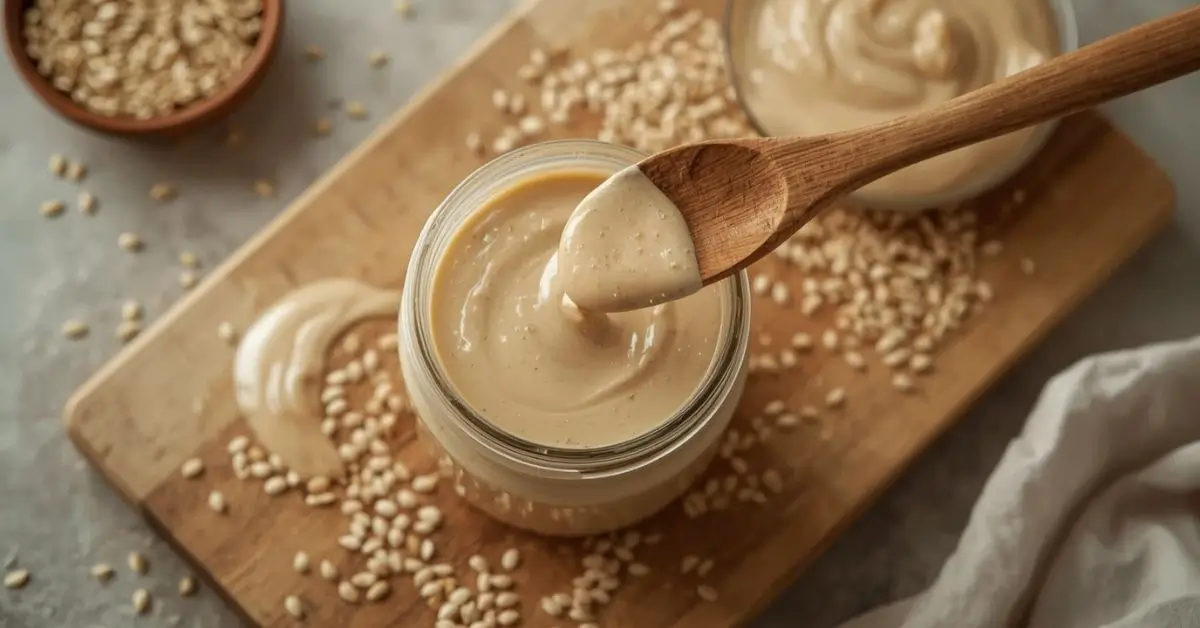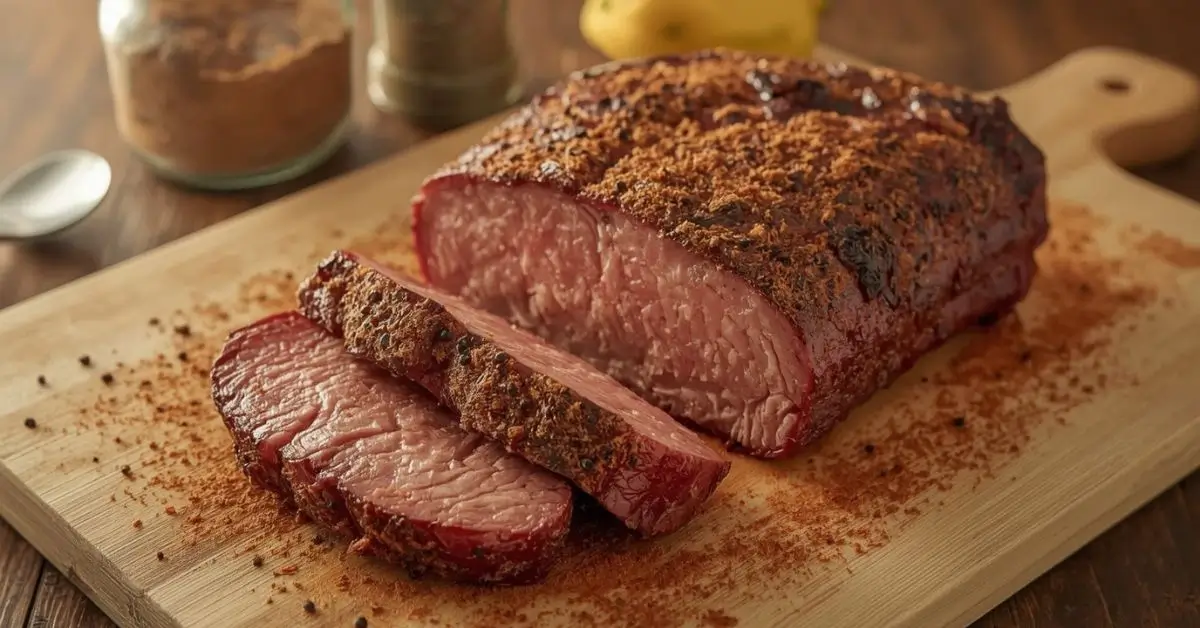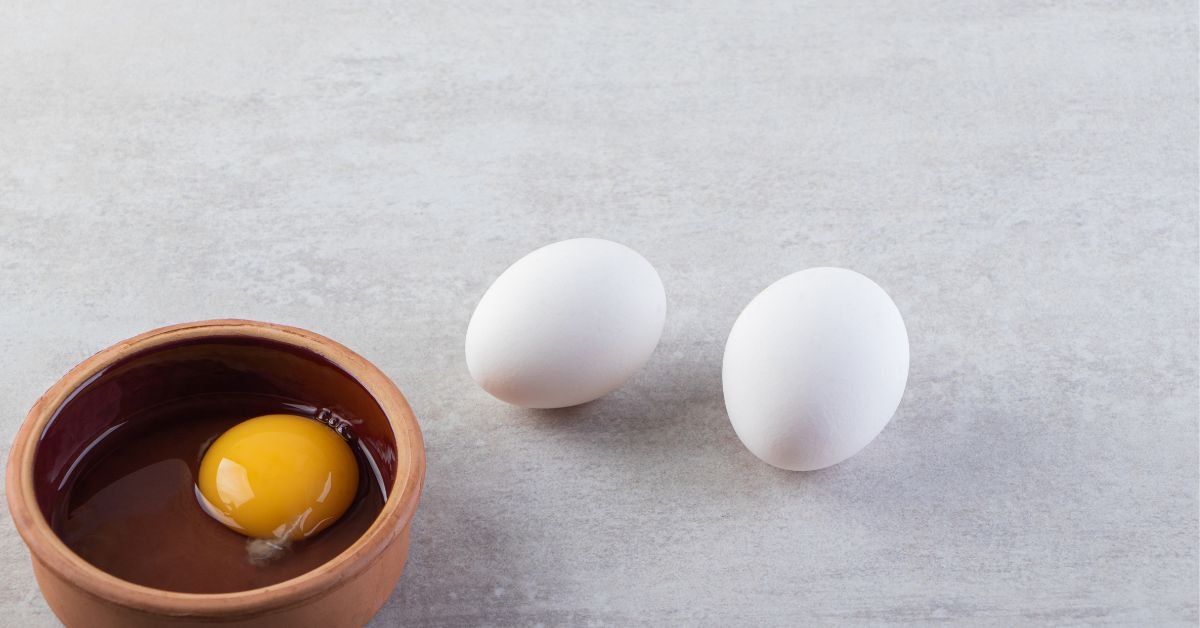FOOD
Golden Goodness: The Healthy Perks of Yellow Rice

Golden Goodness: The Healthy Perks of Yellow Rice
Golden Goodness Yellow rice, a vibrant and flavorful dish rooted in culinary traditions around the globe, does more than brighten a plate—it offers a spectrum of health benefits. Often made with turmeric, saffron, or annatto for color and depth, yellow rice seamlessly blends nutrition with taste.
The Origins and Ingredients Behind the Color
The distinct golden hue of yellow rice is typically derived from turmeric or saffron—both known for their unique compounds and health-boosting qualities. Turmeric contains curcumin, a powerful anti-inflammatory agent known to support joint health and reduce oxidative stress. Saffron, though more expensive and used sparingly, offers crocin and safranal, compounds linked to mood enhancement and improved memory.
In Latin American, Caribbean, Indian, and Southeast Asian cuisines, yellow rice is often infused with additional spices such as garlic, onion, and bay leaves, making it a nutrient-dense alternative to plain white rice. When prepared with whole grains like brown rice or basmati, the dish also offers complex carbohydrates and higher fiber content.
Nutritional Profile: More Than Just a Side Dish
Yellow rice can be highly nutritious, depending on how it is prepared. When made using unrefined grains and minimal saturated fats, it becomes a great source of vitamins, minerals, and antioxidants. Here are some of the key nutrients found in a typical serving:
-
Iron: Vital for transporting oxygen in the blood, iron supports energy levels and cognitive function.
-
Vitamin B6: Important for metabolism and brain health.
-
Manganese: Helps in the formation of connective tissue, bones, and blood clotting factors.
-
Magnesium: Aids in muscle function, heart rhythm regulation, and bone integrity.
The inclusion of turmeric or saffron not only enhances flavor but also contributes to anti-carcinogenic and cardioprotective effects.
Health Benefits of Yellow Rice
1. Supports Digestive Health
Yellow rice made with turmeric promotes better digestion. Turmeric stimulates bile production, which helps the body break down fats more efficiently. The presence of dietary fiber, especially when using brown or parboiled rice, also encourages regular bowel movements and supports gut microbiota balance.
2. Boosts Immune Function
The antioxidants present in turmeric and saffron, along with nutrients like zinc and selenium in rice, help strengthen the immune system. Regular consumption can help reduce susceptibility to seasonal infections and chronic inflammation.
3. Aids in Blood Sugar Control
Substituting white rice with low-glycemic index varieties like brown or wild rice in your yellow rice recipe can support glycemic control, making it a suitable option for those managing Type 2 diabetes. When combined with protein-rich ingredients such as beans or lean meats, yellow rice can help stabilize post-meal blood sugar levels.
4. Promotes Heart Health
Turmeric’s curcumin has been shown to lower LDL (bad) cholesterol and prevent plaque buildup in arteries. When yellow rice is prepared with healthy fats like olive oil or avocado oil, it can further contribute to cardiovascular wellness by reducing inflammation and promoting healthy blood circulation.
5. Mood and Mental Wellness
Saffron, when used in yellow rice, has been linked to improved mood and may help alleviate symptoms of mild depression and anxiety. Studies suggest that saffron’s active compounds can influence serotonin activity in the brain, contributing to emotional balance and clarity.
Cultural Variations: A Dish with Global Identity
Yellow rice is not exclusive to one culture. It’s a celebrated component of meals across regions:
-
South Asia: Often spiced with cumin, cardamom, and turmeric, and served with lentils or curries.
-
Spain (Arroz Amarillo): Typically includes saffron and is used in dishes like paella, combined with seafood or vegetables.
-
Caribbean: Flavored with annatto, garlic, and sometimes coconut milk, offering a tropical twist.
-
Middle East: Often paired with lamb or chicken and includes nuts and dried fruits for added texture and nutrition.
Each regional variation not only brings distinct taste profiles but also slight shifts in nutritional value based on the ingredients used.
How to Make Healthier Yellow Rice at Home
To reap the maximum benefits, you can easily prepare a healthier version of yellow rice at home. Here’s how:
-
Choose whole grain rice: Opt for brown rice, black rice, or even quinoa as a base.
-
Use turmeric or saffron instead of artificial colorants.
-
Add vegetables like peas, carrots, and bell peppers to enhance fiber and nutrient content.
-
Cook with heart-healthy oils like olive oil or avocado oil.
-
Incorporate legumes or lean proteins for a balanced meal.
These adjustments will help reduce saturated fat, increase fiber, and elevate the overall health quotient of your dish.
Potential Considerations and Allergies
Although yellow rice is generally considered safe and healthy, it’s important to check for additives in pre-packaged mixes. Some store-bought versions may contain artificial dyes, preservatives, or excess sodium, which can negate the health benefits. Always check labels, especially if you’re on a low-sodium diet or have sensitivities to food dyes.
FAQs About Yellow Rice
Q1: Is yellow rice healthier than white rice?
Yes, especially if it’s made with brown or whole grain rice and natural spices like turmeric or saffron. It provides more fiber, vitamins, and antioxidants.
Q2: Can I eat yellow rice on a low-carb diet?
Traditional yellow rice is high in carbs. However, you can make low-carb versions using cauliflower rice and turmeric.
Q3: Is turmeric in yellow rice enough to reduce inflammation?
While culinary amounts help, therapeutic doses of curcumin (found in turmeric) often require supplements for significant anti-inflammatory effects.
Q4: Is yellow rice good for kids?
Yes, when prepared naturally. It’s a tasty way to introduce healthy spices and whole grains to children.
Q5: Can I eat yellow rice daily?
Moderation is key. If it’s part of a balanced diet and prepared with healthy ingredients, daily consumption can be beneficial.
Conclusion
Yellow rice is more than just a colorful addition to your plate—it’s a dish steeped in tradition, culture, and health. From boosting digestion and heart health to enhancing mood and immune function, the benefits of this golden grain are as rich as its flavor.

FOOD
Top 7 Health Benefits of Tahhiini You Should Know

Tahhiini, often spelled tahina or tahini, is a sesame paste made by grinding roasted or raw sesame seeds into a smooth, oily butter. Think of it as the sesame equivalent of peanut butter — only creamier, more delicate, and packed with a distinct earthy flavor.
Tahhiini has been a staple ingredient across the Middle East for thousands of years, used in dishes like hummus, baba ghanoush, halva, and even sweet pastries. Today, it’s celebrated worldwide as a superfood for its rich nutrient profile, versatility, and clean plant-based origin.
The Ancient Story of Tahhiini
The origins of tahhiini go back over 4,000 years to the ancient Middle East, where sesame seeds were prized for their oil and medicinal properties. Records from Mesopotamia and Persia mention tahina as a food of the elite — both for nourishment and luxury.
Fast forward to the 21st century, and tahhiini has evolved into a global pantry essential. From health-conscious millennials to Michelin-star chefs, everyone’s finding a place for this humble sesame paste.
Types of Tahhiini: Choosing the Right One
Not all tahhiini is created equal. The flavor, color, and texture depend on the kind of sesame seeds used and how they’re processed. Let’s break down the main varieties:
Hulled Tahini
This version is made from sesame seeds with their outer shells removed. The result? A smoother, lighter-colored tahini with a mild flavor and silky consistency. It’s ideal for tahini sauce, tahini dressing, and desserts.
Unhulled Tahini
Unhulled tahhiini keeps the seed’s outer shell intact, giving it a deeper color, thicker texture, and more robust taste. It’s richer in calcium and fiber but can taste slightly bitter. If you’re into nutrient density, this one’s for you.
Roasted Tahini
Roasted tahhiini uses sesame seeds that have been lightly toasted before grinding. This enhances its nutty aroma and creates a warm, deep flavor that’s perfect for savory dishes or tahini dip.
Raw Tahini
Raw tahhiini is made from unroasted seeds, preserving its delicate and slightly bitter taste. It’s great for smoothies, salad dressings, or as a base for healthy desserts where subtlety matters.
Tahhiini vs. Sesame Seed Butter
While they sound similar, tahhiini and sesame seed butter have slight differences. Sesame butter is often thicker, made with roasted seeds, and sometimes sweetened. Tahhiini, on the other hand, stays pure — just ground sesame seeds and nothing else.
This purity makes it ideal for both savory and sweet recipes, from creamy tahini sauce to sweet tahini cookies or even tahini halva.
Delicious Ways to Use Tahhiini
Tahhiini’s charm lies in its adaptability. It blends beautifully with both salty and sweet ingredients. Here are some popular ways to incorporate it into your cooking:
Tahini for Hummus
Every good hummus recipe starts with high-quality tahhiini. Its creamy texture adds richness, while its earthy tones balance the bright acidity of lemon and the sharpness of garlic.
Tahini Dressing for Salads
Mix tahhiini with lemon juice, garlic, olive oil, and water for an easy, zesty tahini dressing. It’s vegan, gluten-free, and adds instant sophistication to any salad.
Tahini Dip for Snacks
Pair tahini dip with pita bread, falafel, or roasted veggies. Add a pinch of cumin or paprika for a Middle Eastern flair.
Tahini and Lemon Sauce for Grilled Dishes
This duo is a match made in heaven. Tahini and lemon sauce works wonders over roasted vegetables, grilled fish, or even as a sandwich spread.
Tahini Halva and Tahini Cookies
Sweet lovers, rejoice! Tahini halva is a melt-in-the-mouth sesame dessert, while tahini cookies bring a nutty twist to traditional baking. Their balance of sweetness and depth makes them unforgettable.
Health Benefits of Tahhiini
Tahhiini isn’t just delicious — it’s also a nutritional powerhouse. Packed with healthy fats, plant-based protein, and essential minerals, it’s earned its superfood reputation for good reason.
Heart Health Support
Tahhiini is rich in monounsaturated and polyunsaturated fats, which can help lower bad cholesterol and reduce the risk of heart disease.
High in Calcium and Iron
Especially in unhulled tahini, calcium levels are impressive. One tablespoon can contain up to 10% of your daily calcium needs — a huge plus for vegans.
Protein for Vegans and Vegetarians
A serving of tahhiini offers around 5 grams of protein, making it an excellent source of plant-based energy.
Antioxidant Power
Sesame seeds are loaded with lignans and vitamin E, known for their antioxidant and anti-inflammatory effects.
Gut Health and Fiber
Unhulled tahhiini provides extra fiber, aiding digestion and maintaining a healthy gut microbiome.
Expert Tips: How to Use Tahhiini Like a Chef
- Warm before using: Tahhiini can separate or harden at the bottom of the jar. Stir well or warm slightly for a smooth consistency.
- Balance flavors: Tahhiini pairs beautifully with acid (like lemon or vinegar), salt, and sweetness.
- Experiment globally: Use tahhiini in Asian noodle sauces, smoothie bowls, or even chocolate spreads.
- Store smart: Keep it in a cool, dark place. Refrigeration can make it too thick, but room temperature keeps it perfect for drizzling.
A Real-Life Tahhiini Moment
A food blogger once tweeted, “I replaced peanut butter with tahhiini in my morning toast — and now I can’t go back. It’s creamy, savory, and somehow feels healthier.” That single post sparked thousands of comments, proving how tahhiini has quietly become the new breakfast trend.
Pros and Cons of Tahhiini
| Pros | Cons |
|---|---|
| Rich in nutrients and healthy fats | Can taste bitter if unhulled |
| Vegan and gluten-free | Some brands separate quickly |
| Versatile for sweet and savory dishes | High in calories if overused |
| Long shelf life | May cause allergies for some people |
| Supports heart and bone health | Needs stirring before use |
Modern Uses of Tahhiini in 2025
The year 2025 has brought a new wave of tahhiini creativity. Vegan bakeries now use tahini spread as a base for frostings and fillings. Fitness influencers blend raw tahini into protein smoothies. Even baristas are experimenting with tahini coffee — yes, you read that right.
In the wellness community, tahhiini has become a top ingredient for those following Mediterranean, ketogenic, or anti-inflammatory diets. It’s also a go-to for those avoiding nut butters due to allergies.
Common Myths About Tahhiini
- Myth: Tahhiini is high in fat and unhealthy.
Fact: The fats in tahhiini are heart-healthy, similar to those in olive oil and avocado. - Myth: Tahhiini is only for hummus.
Fact: You can use tahhiini in desserts, sauces, smoothies, and even pancakes. - Myth: Tahhiini spoils quickly.
Fact: It actually has a long shelf life when stored properly — up to 6 months after opening.
How to Choose the Best Tahhiini Brand
When shopping for tahhiini in 2025, look for:
- Ingredients: 100% sesame seeds (no additives or oils).
- Texture: Smooth, not gritty or too thick.
- Color: Light beige for hulled, darker brown for unhulled.
- Origin: Lebanese, Israeli, Greek, and Turkish brands are often top-quality.
FAQ Section
Tahhiini is made by grinding roasted or raw sesame seeds into a smooth, creamy paste. It’s essentially pure sesame paste, sometimes called tahina.
Unlike peanut butter, tahhiini has no added sugar or salt (unless specified). It’s more earthy, thinner, and pairs well with both sweet and savory foods.
Yes! Toast sesame seeds, let them cool, then blend them with a drizzle of neutral oil until smooth. Homemade tahini spread can last 2–3 months in a sealed jar.
Natural oils rise to the top because tahhiini doesn’t contain stabilizers. Stir it well before each use — or store upside down for even consistency.
Final Thoughts
From its humble beginnings as an ancient sesame paste to becoming a modern health icon, tahhiini has earned its place in the global kitchen. Whether you’re using it as tahini dressing for your salads, swirling it into tahini halva, or baking tahini cookies, this silky superfood proves that simple ingredients often make the biggest impact.
FOOD
How to Find the Brisket Rub Best for Your BBQ

Before diving into recipes, it’s essential to understand what separates a mediocre rub from the brisket rub best. A top-notch rub balances flavor, enhances the natural taste of beef, and complements slow-cooking or smoking methods. Here are key factors to consider:
- Flavor Profile: The best brisket rubs blend salt, sugar, and spices to create a perfect balance of savory, sweet, and smoky notes.
- Texture: A good rub should create a crust or bark that locks in moisture without overpowering the meat.
- Versatility: Look for rubs that work for smoking, grilling, or oven-baking.
- Ease of Use: Whether homemade or store-bought, the rub should be easy to apply and consistent in flavor.
As pitmaster Jake R. tweeted last summer:
“Finally nailed the brisket bark with this homemade rub. Friends called it the best they’ve ever had. Game changer!”
Best Brisket Seasoning: Ingredients You Need
When creating the best brisket seasoning, certain ingredients are essential. These spices not only add flavor but also enhance the Maillard reaction, helping form that signature crust. Common ingredients include:
- Kosher salt: Enhances flavor and tenderizes meat.
- Black pepper: Classic, bold, and a must for Texas-style rubs.
- Paprika: Adds subtle smokiness and vibrant color.
- Brown sugar: Balances spices with sweetness and aids caramelization.
- Garlic and onion powder: Essential aromatics that deepen flavor.
- Cayenne or chili powder: Adds heat if desired.
BBQ Rub for Brisket: Store-Bought vs Homemade
Store-Bought Options
If you’re pressed for time, there are excellent BBQ rubs for brisket on the market. Look for blends that highlight natural ingredients without artificial flavors. Popular brands often focus on regional styles, like Texas or Kansas City rubs.
Pros:
- Convenient
- Consistent flavor
- Widely available
Cons:
- Limited customization
- Can be more expensive per ounce
Homemade Brisket Rub
Nothing beats a homemade brisket rub for control and flavor experimentation. You can tweak sweetness, heat, and herbiness to match your taste.
Simple Recipe:
- 1/4 cup kosher salt
- 1/4 cup black pepper
- 2 tbsp smoked paprika
- 1 tbsp garlic powder
- 1 tbsp onion powder
- 2 tsp cayenne (optional)
- 2 tbsp brown sugar
Mix thoroughly and apply generously to your brisket 12–24 hours before cooking.
Smoked Brisket Spices: How to Layer Flavors
Smoking brisket is both an art and a science. The right smoked brisket spices can elevate the flavor from ordinary to legendary. Consider layering your rub with additional ingredients:
- Liquid smoke or smoked paprika for deeper smokiness.
- Coffee grounds or cocoa powder to enhance bark complexity.
- Herbs like thyme or rosemary for aromatic undertones.
The trick is to build flavor without masking the natural beef taste. Start with a base rub, then adjust depending on your cooking method and personal preference.
Texas-Style Brisket Rub: A Regional Favorite
When people think of the Texas-style brisket rub, they imagine simplicity and bold flavors. Traditionally, this rub is:
- Salt and black pepper heavy
- Minimal sugar
- No complex spices
- Focused on highlighting the beef’s natural flavor
Applying a Texas-style rub generously and letting it rest overnight before smoking produces the iconic bark and juicy interior Texas BBQ enthusiasts crave.
Dry Rub for Brisket: Technique Matters
Applying a dry rub for brisket isn’t just sprinkling spices. Here’s how to do it like a pro:
- Pat the brisket dry with paper towels. Moisture prevents the rub from sticking.
- Coat generously on all sides, pressing the rub into the meat.
- Wrap or rest for several hours or overnight in the fridge to allow flavor penetration.
- Cook low and slow to ensure the rub forms a perfect crust.
Pro tip: Don’t rush the resting period after cooking either—let it rest wrapped in foil for at least 30 minutes to retain juices.
Brisket Spice Mix: Advanced Variations
Once you’re comfortable with basic rubs, experiment with a brisket spice mix that reflects your style. Some advanced variations include:
- Sweet and smoky: Brown sugar + smoked paprika + chipotle powder
- Spicy and savory: Cayenne + black pepper + garlic powder + onion powder
- Herbal touch: Thyme, rosemary, and oregano with paprika and salt
Mix small batches, taste-test, and tweak ratios until it’s perfect for your palate.
Meat Rub Recipes: Pairing with Sides
A great meat rub recipe is only part of the BBQ experience. Consider pairing your brisket with sides that complement the rub:
- Creamy coleslaw to balance smoky heat
- Pickled vegetables to cut richness
- Cornbread or baked beans to enhance sweet notes
This way, the brisket rub doesn’t just season the meat—it sets the tone for the entire meal.
BBQ Seasoning Mix: Storage Tips
Whether homemade or store-bought, your BBQ seasoning mix deserves proper storage:
- Keep in airtight jars
- Store away from light and heat
- Label with date and ingredients
- Shake or mix before each use to redistribute oils and spices
Proper storage ensures your brisket rub maintains potency and flavor longevity.
Slow-Cooked Brisket Rub: Maximizing Flavor
For slow-cooked brisket rub, patience is key. Applying rubs and letting flavors meld over long cooking periods brings out deep, smoky, and savory notes. Tips for slow-cooked success:
- Rub generously before cooking
- Smoke or bake at low temperatures (225–250°F) for several hours
- Wrap in butcher paper or foil during the final phase for tender meat
- Slice against the grain to preserve tenderness
Slow-cooked brisket allows the rub to penetrate deeply, enhancing every bite.
Real-Life Example
Jamie L., a BBQ enthusiast from Austin, shared on a forum:
“I’ve tried dozens of brisket rubs, but the one I made with smoked paprika, brown sugar, and a hint of coffee grounds gave me the perfect bark. Family BBQ night is never the same!”
This example highlights the impact of customizing your rub for maximum flavor.
FAQ’s
The best rub for smoked brisket balances salt, sugar, and spices, and complements slow-cooking or smoking methods. Texas-style rubs focus on simplicity, while homemade rubs allow experimentation with sweet, smoky, or spicy profiles.
Combine kosher salt, black pepper, smoked paprika, garlic powder, onion powder, brown sugar, and optional cayenne. Adjust ratios to your taste and let it rest on the meat 12–24 hours before cooking.
Yes! A dry rub for brisket is ideal for flavor without excess moisture. Press the rub into the meat, let it rest, and cook low and slow for the best results.
Applying too little rub
Skipping the resting period before cooking
Overcomplicating the mix with too many flavors
Not storing the rub properly, leading to stale or weak seasoning
Conclusion
Choosing the brisket rub best can feel overwhelming, but understanding ingredients, technique, and regional variations makes it easier. Whether you prefer a classic Texas-style rub or a customized homemade blend, the key is balancing flavors, patience during cooking, and experimentation.
FOOD
Surprising Truth: Powerful Health Benefits & Calories in 2 Eggs Revealed

how many calories in 2 eggs, including the difference between boiled, fried, and scrambled eggs, plus the full 2 eggs nutrition info. We’ll even compare the calories in 3 eggs for those with a bigger appetite. By the end, you’ll have a clear, science-backed answer—plus some practical tips for making eggs work for your health goals in 2025.
Why Eggs Are Still a Breakfast Powerhouse
Eggs have been a breakfast favorite for generations. They’re affordable, versatile, and packed with nutrients. But in a world where calorie counting and nutrition tracking are more popular than ever, it’s natural to ask: How many calories are in 2 boiled eggs? What about fried or scrambled? And is there a big difference if you eat three instead of two?
Let’s crack open the facts.
The Quick Answer: How Many Calories in 2 Eggs?
If you’re looking for a fast answer, here it is:
- large eggs (raw or boiled): About 140–156 calories total
(Each large egg contains roughly 70–78 calories.)
But as you’ll see, the way you cook your eggs can change the calorie count—and the nutrition profile—quite a bit.
Eggs Nutrition Info: What’s Inside?
Before we dive into cooking methods, let’s look at the basic 2 eggs nutrition info for large, Grade A eggs (the kind you’ll find in most grocery stores):
| Nutrient | 2 Large Eggs (100g) |
|---|---|
| Calories | 140–156 kcal |
| Protein | 12–14g |
| Total Fat | 10–11g |
| Saturated Fat | 3–3.5g |
| Cholesterol | 370–380mg |
| Carbohydrates | 1–2g |
| Sugars | 1g |
| Sodium | 140–160mg |
| Vitamin D | 20% DV |
| Vitamin B12 | 40% DV |
| Choline | 50% DV |
*DV = Daily Value, based on a 2,000-calorie diet.
Eggs are a complete protein source, meaning they contain all nine essential amino acids. They’re also rich in vitamins and minerals, especially B12, choline, and vitamin D.
How Many Calories Are in 2 Boiled Eggs?
Boiled eggs are one of the healthiest ways to enjoy this breakfast classic. Why? Because you’re not adding any extra fat or calories from oil or butter.
- boiled eggs: 140–156 calories (just like raw eggs)
That’s it! No hidden calories, no surprises. Boiling preserves the egg’s natural nutrition, making it a favorite for meal preppers and fitness enthusiasts.

Real-Life Example
One user shared,
“I started meal prepping with boiled eggs for my work lunches. It’s so easy to track calories, and I feel full for hours.”
Fried Egg Calories: Does Cooking Method Matter?
Absolutely! When you fry eggs, the calorie count goes up—sometimes by a lot—depending on how much oil or butter you use.
- fried eggs (in 1 tsp oil): About 180–200 calories
- fried eggs (in 1 tbsp butter): Up to 250 calories
Why the jump? Fats like oil and butter add about 40–100 calories per tablespoon. If you’re watching your intake, consider using a nonstick pan and a light spray of oil.
Pro Tip
If you love fried eggs but want to keep calories low, try using a nonstick skillet and just a dab of olive oil spray. You’ll get the flavor without the extra calories.
Scrambled Eggs Calories: What’s the Real Count?
Scrambled eggs are another breakfast favorite, but the calorie count can vary depending on what you add.
- scrambled eggs (plain, no milk or butter): 140–156 calories
- scrambled eggs (with 1 tbsp milk): About 160 calories
- scrambled eggs (with 1 tbsp butter): Up to 250 calories
Adding cheese, cream, or extra butter? The calories can climb quickly. For a lighter option, use a splash of milk or a non-dairy alternative, and skip the cheese.
Calories in 3 Eggs: For Bigger Appetites
If you’re extra hungry or need more protein, you might wonder about the calories in 3 eggs.
- large eggs (boiled or raw): 210–234 calories
- fried eggs (in 1 tbsp oil): 270–300 calories
- scrambled eggs (with 1 tbsp butter): Up to 375 calories
As you can see, the numbers add up fast—especially with added fats.
Comparing Cooking Methods: Boiled vs. Fried vs. Scrambled
| Cooking Method | 2 Eggs Calories | 3 Eggs Calories |
|---|---|---|
| Boiled | 140–156 | 210–234 |
| Fried (1 tsp oil) | 180–200 | 270–300 |
| Scrambled (plain) | 140–156 | 210–234 |
| Scrambled (with butter) | 200–250 | 300–375 |
Key takeaway: The healthiest, lowest-calorie way to eat eggs is boiled or plain scrambled. Frying or adding butter increases the calorie count significantly.
2 Eggs Nutrition Info: Beyond Calories
Calories aren’t the whole story. Eggs are loaded with nutrients that support muscle growth, brain health, and more.
Protein Power
Two eggs provide about 12–14 grams of high-quality protein. That’s about 25% of your daily needs if you’re moderately active.
Healthy Fats
Eggs contain both saturated and unsaturated fats. Most of the fat is in the yolk, which also holds most of the vitamins and minerals.
Vitamins & Minerals
Eggs are a top source of vitamin B12, choline (important for brain health), and vitamin D. They also provide selenium, riboflavin, and phosphorus.
Are Eggs Good for Weight Loss?
Many nutritionists recommend eggs for weight loss because they’re filling, high in protein, and relatively low in calories. Studies show that eating eggs for breakfast can help reduce calorie intake later in the day.
The Satiety Factor
Eggs keep you full longer than many other breakfast foods. That means you’re less likely to snack before lunch.
Real-Life Example
A fitness enthusiast shared,
“Switching from cereal to eggs in the morning helped me lose 10 pounds. I wasn’t hungry all the time anymore.”
Risks and Considerations: Cholesterol and Allergies
Cholesterol Concerns
Eggs are high in cholesterol (about 185–190mg per egg), but recent research shows that for most people, dietary cholesterol doesn’t raise blood cholesterol as much as once thought. If you have specific health concerns, talk to your doctor.
Allergies
Eggs are a common allergen, especially in children. If you have an egg allergy, you’ll need to avoid them and find alternative protein sources.
Pros and Cons of Eating Eggs Daily
Pros
- High in protein and nutrients
- Affordable and easy to prepare
- Versatile for any meal
- May support weight loss
Cons
- High in cholesterol (for some people)
- Can be high in calories if cooked with lots of fat
- Not suitable for those with egg allergies
How to Make Eggs Healthier in 2025
With new kitchen gadgets and healthier cooking oils, it’s easier than ever to enjoy eggs without extra calories.
- Use an air fryer or nonstick pan to reduce oil.
- Add veggies like spinach, tomatoes, or peppers for extra fiber and nutrients.
- Skip the cheese and heavy cream to keep calories in check.
- Try egg whites if you want lower calories and less fat (2 egg whites = about 34 calories).
FAQs
2 boiled eggs contain about 140–156 calories, depending on their size. Boiling doesn’t add any extra fat or calories, making it one of the healthiest ways to enjoy eggs.
Fried egg calories depend on how much oil or butter you use. Two eggs fried in a teaspoon of oil have about 180–200 calories. If you use a tablespoon of butter, it can go up to 250 calories.
Scrambled eggs calories vary based on what you add. Two plain scrambled eggs have about 140–156 calories. Adding milk, cheese, or butter will increase the calorie count.
2 eggs nutrition info:
140–156 calories
12–14g protein
10–11g fat
1–2g carbs
Rich in B12, choline, vitamin D
Calories in 3 eggs (boiled or raw) are about 210–234. If you fry or scramble them with added fat, the calories can go up to 375 or more.
Final Thoughts
Eggs are more than just a breakfast food—they’re a nutrition powerhouse that can help you meet your health goals in 2025 and beyond. Whether you prefer them boiled, fried, or scrambled, knowing how many calories in 2 eggs gives you the power to make informed choices.
-

 BLOG3 months ago
BLOG3 months agoShocking Gasp GIFs – Top 9 Picks
-

 TECH4 months ago
TECH4 months agoQuick Guide: How to Easily Reset Your Acer Laptop
-

 ENTERTAINMENT4 months ago
ENTERTAINMENT4 months agoTwitter Rate Limit Exceeded: What It Means and How to Fix It Fast
-

 BLOG5 months ago
BLOG5 months agoUnmasking the Risks: AI Face Swap in NSFW Content
-

 BLOG2 months ago
BLOG2 months agoIs Recurbate Safe for Users or a Hidden Risk?
-

 BLOG4 months ago
BLOG4 months agoMark Spaeny: Tailoring Success and Raising a Star
-

 BLOG5 months ago
BLOG5 months agoRagdoll Archers Unblocked: Chaos in Every Shot
-

 BLOG4 months ago
BLOG4 months agoHidden Gems: The Rarest Basketball Cards Ever Found

